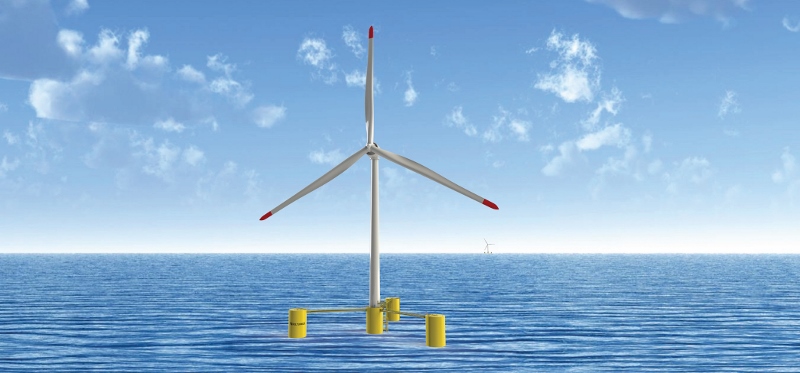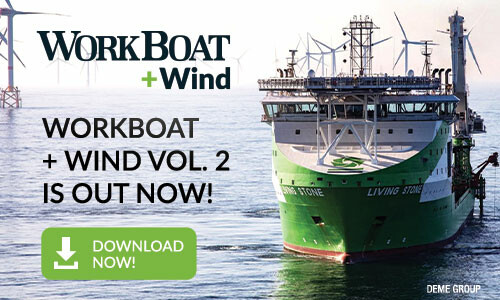On July 7, Maine Gov. Janet Mills signed into law a new measure that prohibits new offshore wind projects in state waters, in a compromise aimed at protecting Maine’s commercial lobster and recreational fisheries, while potentially allowing future wind power development in federal waters farther offshore.
Mills in June had signed a bill to plan for what would be the first U.S. research area for floating offshore wind in Gulf of Maine federal waters. But the state’s politically and culturally influential fishing industry has been deeply opposed to allowing any wind turbines off Maine, since Mills in November 2020 announced the state government’s intention to seek a federal lease for 16 square miles for an array of up to a dozen floating turbines.
The ensuing debate led in June to a compromise in the Maine legislature, where Rep. Billy Bob Faulkingham, a Winter Harbor lobsterman, introduced a measure that would ban wind development in state waters and prohibit issuing state permits for cables and other supporting infrastructure to connect projects in federal waters to Maine.
Lawmakers were also considering a bill setting up Mills’ proposal to impose a 10-year ban in state waters but allow the Aqua Ventus demonstration project near Monhegan to proceed with other research projects and issue permits for federal waters projects.
Final amendments reached a bipartisan compromise that sets up a new Offshore Wind Research Consortium that includes representation from Maine fishermen.
Along with the permanent prohibition on turbines in state waters, the final law blocks state permits for cables or new transmission unless state officials by April 2023 can meet three priorities proposed by the fishing industry:
- Complete Maine’s offshore wind strategic planning project that began earlier this year.
- Undertake a full review of Maine laws and regulations to ensure they adequately protect the state’s coastal resources.
- Ensure that the Offshore Wind Research Consortium identifies research questions that need to be answered regarding offshore wind development.
“Maine is uniquely prepared to grow a strong offshore wind industry, create good-paying trades and technology jobs around the state, and reduce our crippling dependence on harmful fossil fuels,” Mills said in a statement after signing the measure. “This legislation cements in law our belief that these efforts should occur in federal waters farther off our coast through a research array that can help us establish the best way for Maine to embrace the vast economic and environmental benefits of offshore wind.
“I applaud the legislature’s strong bipartisan support of this bill, which I believe demonstrates that offshore wind and Maine’s fishing industry can not only can coexist but can help us build a stronger economy with more good-paying jobs and a brighter, more sustainable future for Maine people.”
Lobstermen and their community advocates – already in a state of high anxiety over new federal whale protection measures they worry could put fishermen out of business – reacted with dismay to what they foresee as industrialization of the Gulf of Maine. By March 2021 that escalated to on-the-water protests over plans for cabling to the Monhegan site.
“We were expecting to be part of a process to understand what offshore wind would mean for Maine,” said Patrice McCarron, executive director of the Maine Lobstermen’s Association, during a public hearing on the wind legislation. “We weren’t expecting the governor to announce a commercial offshore wind development with the ‘what, where, how many and with who’ already decided.”
In a statement the Mills administration said the law reflects a “careful approach to offshore wind and stems from extensive discussions among the Governor’s Energy Office and Department of Marine Resources with fishing, wildlife, and environmental organizations aimed at responsibly pursuing offshore wind in co-existence with Maine’s maritime heritage.”
In coming days, the energy office will name a preferred site for the federal waters research array, a step toward submitting a formal application to the federal Bureau of Ocean Energy Management later this summer, beginning the process to obtain a lease.
State planners are looking at potential sites from 20 nautical miles to 40 nm off the state’s coast, where export cables would be feasible to connected power from turbines into the state’s electrical grid at the Wyman Station in Yarmouth or Maine Yankee in Wiscasset.
The GEO plans a virtual public meeting on July 13 about the siting of the array and will accept feedback on the proposed site selection before finalizing an application to BOEM for a research lease.
Another virtual meeting on July 14 to start the public process to develop an Offshore Wind Roadmap for Maine, a strategic plan for developing an offshore wind industry in the state.





